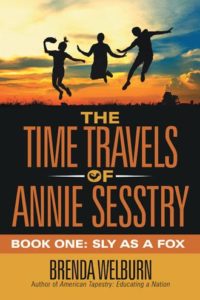The following are the words of Brenda Welburn, author of The Time Travels of Annie Sesstry. For more information on Brenda or her book, find her on her website, Facebook or Twitter. Download the Archway Publishing free publishing guide for more information on our supported self-publishing services.
DNA testing and expanding access to public records and private collections has resulted in an explosion of interest in ancestry and genealogical research. You have a scintillating idea for a novel centered around your family history. The plot material is enormous. Love, history, secrets, scandals, and adventure are a few scenarios waiting to draw readers to your story. But before undertaking the monumental task of writing a historical novel, consider a few guidelines.
Take time to research and understand the era.
Readers know very early if the details of your book’s time-period are sketchy or incorrect. They immediately recognize twenty-first-century vocabulary or the misplacement of artifacts and technology. I used barbwire in my book, and someone challenged it and checked to determine if barbwire even existed at that time. It turns out the patent date was her point of reference; which came several years after it was in use
Familiarize yourself with the architecture, political conditions, language, and clothing of the era. Frequent depictions of the Puritans during colonial times might suggest the women only wore black or gray. Further research reveals clothing restrictions were on fabric and embellishments, not colors. Doing deep-dive research ensures accuracy and authenticity in your book, and it provides unusual ideas for plotlines. There is a reason why it was called “The Scarlet Letter.”
 Narrow the Arch of Your Story
Narrow the Arch of Your Story
Writing about a specific era outside of your life experiences can be challenging and made all the more daunting for your reader to follow if you try to cover too broad a period. Identify a span of time that you can write about with fidelity and passion. It will help in the development of your story and characters and allow you to cultivate a captivating tale. Besides, you can always save the next century for your sequel.
Write the Story
Unless you are writing a history book, which you are not if you are crafting fiction, concentrate on the story and allow the historical influences to flow naturally and enrich your narrative. Historical accuracy and detail is essential and provides context, but the reader is primarily interested in the tale you weave and the characters you create. Regardless of the era, it’s still about the story and not every minute factoid of what was happening historically when your character was born, married, faced the firing squad or died.
Avoid Family Surprises
If you choose to write your family saga, be considerate of those who might be impacted by your story. You may be familiar with the family secrets from one hundred years ago, but if it means Jane’s Uncle John was indeed her father and not her uncle, be sure Jane’s descendants are acquainted with the family lore. Even if they are not enthusiastic about revealing family dirt; being surprised about it in a published work is even worse.
Writing a historical novel can be loads of fun when you have great partners. Archway Publishing was an excellent vehicle for achieving my literary goal and publishing my first historical YA novel, The Time Travels of Annie Sesstry. I made a lot of mistakes, but I acquired a tremendous amount of knowledge. At every step of the way, I had the opportunity to engage with highly professional staff who helped me stay on track and secure the title of author. Now, I am gearing up for book two.
Archway Publishing is always looking for content for its blog. If you’re an Archway Publishing author and would like to share a guest blog post, please visit our Blog Guidelines Page.

